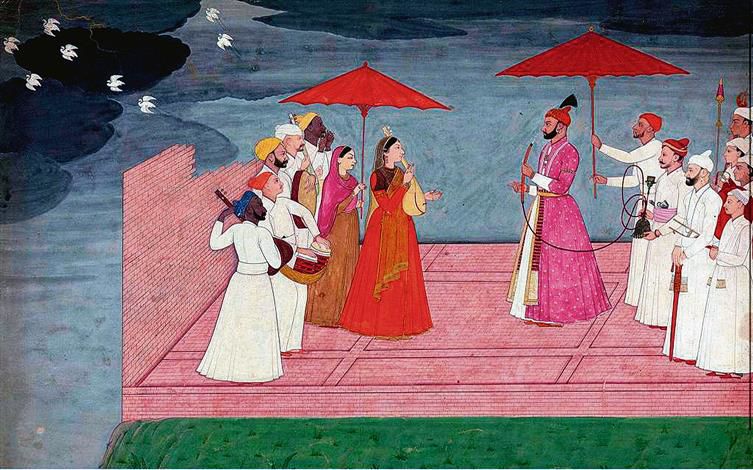Of Guler’s Pahari art lost treasure
Raghav Guleria
Dharamsala, July 30
It was the beginning of the 18th century that saw the rise of the Pahari school of painting at Guler in Kangra district. Defining the art, then Kangra Divisional Commissioner MS Randhawa said, “A prince, with a refined taste, laid the foundation of this school at Guler.”
Randhawa, in his famous book ‘Kangra Paintings on Love’, referred to Raja Goverdhan Chand as the “greatest patron of the art”.
No efforts made to bring back works
- Nainsukh of Guler is the only entry from the state of Himachal Pradesh in the book titled ‘Incarnations-India in 50 lives’, written by Sunil Khilnani
- “It is unfortunate that no effort has ever been made to bring back their works, which still adorn museums in Chandigarh, Lahore, Rietberg in Zurich, Victoria and Albert in London – to name a few,” said an art enthusiast from Himachal
WG Archer, an expert on Pahari miniatures, declared Guler as the “birthplace of Pahari miniatures”. In his book titled ‘Indian Paintings in the Punjab Hills’, Archer wrote: “It was Guler where this art flourished and spread to 38 other centres in the Kangra hills.”
During this golden period, unprecedented experimentation and innovations in the art were observed, mostly perpetuated by painters in Guler and the one who was in the sheet anchor role was Pandit Seu. He, along with his sons Manaku and Nainsukh, has created art pieces that are admired to this day by people across the globe. Experts opine that the Guler artists had the “colours of dawn and the rainbow on their palette” as their remarkable works are marked by liquid grace and delicacy.
It is believed that Seu was born in 1680 and lived till 1740. He belonged to the carpenter-painter clan and had earned the title “Pandit” because of his dexterity in art. Both his sons were excellent painters as well.
While Nainsukh left Guler for Jasrota to be in the company of his childhood companion Balwant Singh, Manaku stayed back at Guler with his father, practising his style and helping him complete the remarkable projects. ‘Nainsukh’, a 2010 film, directed by Amit Dutta and based on Nainsukh’s life and works, has already earned a lot of appreciation in all international film festivals where it was screened.
A series of paintings titled ‘Guler Ramayana’ is one of the finest works ever produced. BN Goswamy and Eberhard Fischer, the popular writer and anthropologist duo, have given very eloquent description of the painting in their famous book ‘Pahari Masters’: “Cypresses raise their spiky heads skywards; plantain trees bend elegantly with the weight of their own leaves and flowers; trees nestle against each other; even tiny clumps of grass and weed on the ground appear luscious.”
The Rietberg museum in Switzerland recently released a publication on the Guler Ramayana series based on the collection of original paintings that are in their possession. The book provides an opportunity to have a glance of the masterpieces.
Art historians consider Nainsukh as one of the most prominent artists of his period who, with his deep thoughts and precision, painted the real, live and the natural—keeping in mind the veracity of the theme. Nainsukh learnt to work in a modified mode based on observation and individuation.
Breaking the tradition of making darbari or hunting scenes alone, he also captured his master’s informal moments—like shaving or taking a nap. Art critics consider his works as perfect, according to Indian art aesthetics. “It is unfortunate that no effort has ever been made to bring back their works, which still adorn museums in Chandigarh, Lahore, Rietberg in Zurich, Victoria and Albert in London — to name a few,” said an art enthusiast.









